Cloth Masks through SEM imaging
Last updated: 18 Nov 2021 | 5377 Views |
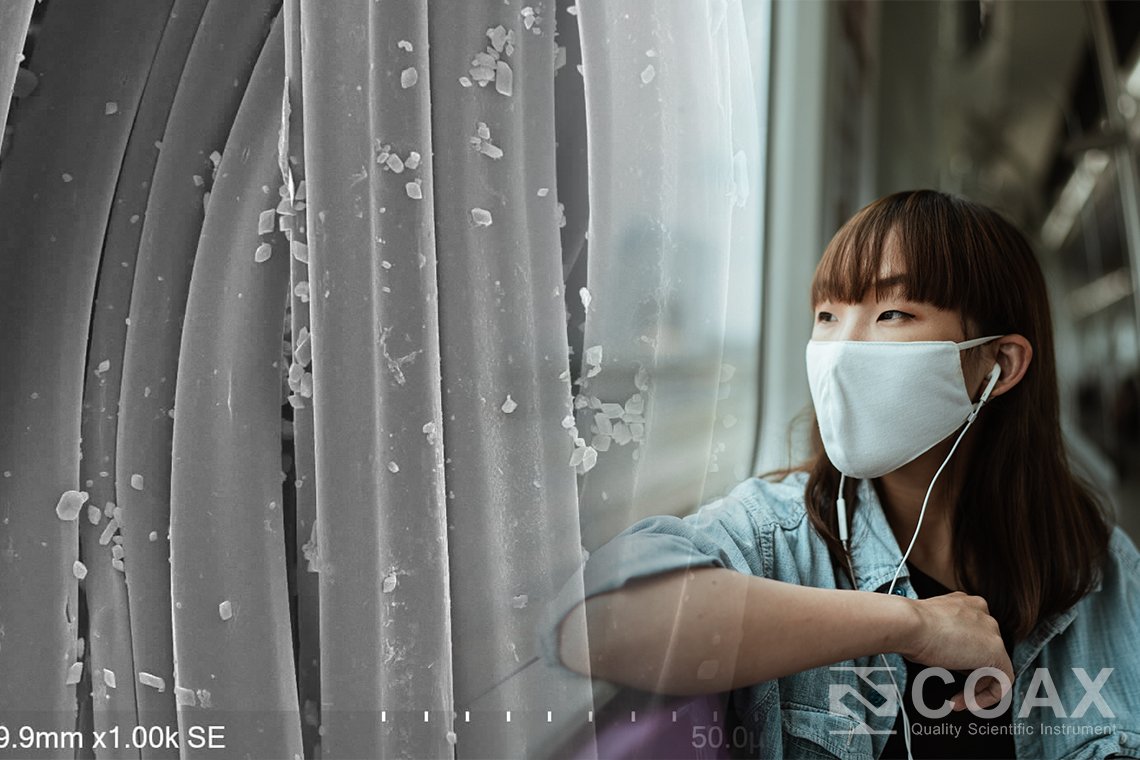
With the current COVID-19 pandemic, face masks have become a part of everyone's daily life to help slow the spread of the virus. The US Centers for Disease Control and Prevention released findings that double-masking can be an effective way to reduce the transmission of the coronavirus that causes Covid-19. The method of double masking recommended by CDC is to wear a cloth mask on top with a disposable medical mask underneath. The cloth mask will add up layers and pin down the side gaps of the medical mask improving performance and reducing SARS-CoV-2 transmission and exposure.
Cloth Masks
Cloth Masks can be made from a variety of fabrics and many types of cloth masks are available. Nowadays, Cloth masks are not just a product or a protective equipment, they are also a tool to showcase innovation potential of the life wear. Some of the products prioritize high-quality fabrics, adequate ventilation, and a delicate texture. Some claim to feature a coating (Nano Hydrophobic Filament) that prevent water droplets from penetrating which is helpful for reducing the spread of germs from coughing or sneezing.
SEM imaging
In this Cloth Mask through SEM imaging experiment. We selected cloth masks that is on the Thai market by popular brands with claims that the cloth masks can be use through 30 wash cycles to see close images and changes through washings.
Our Hitachi Scanning Electron Microscope Model SU3900 captured these pictures at 1000x magnification to see the physical properties of new mask and observe how the fibers of the masks change after washing (Wash 30 times by hand with detergent).
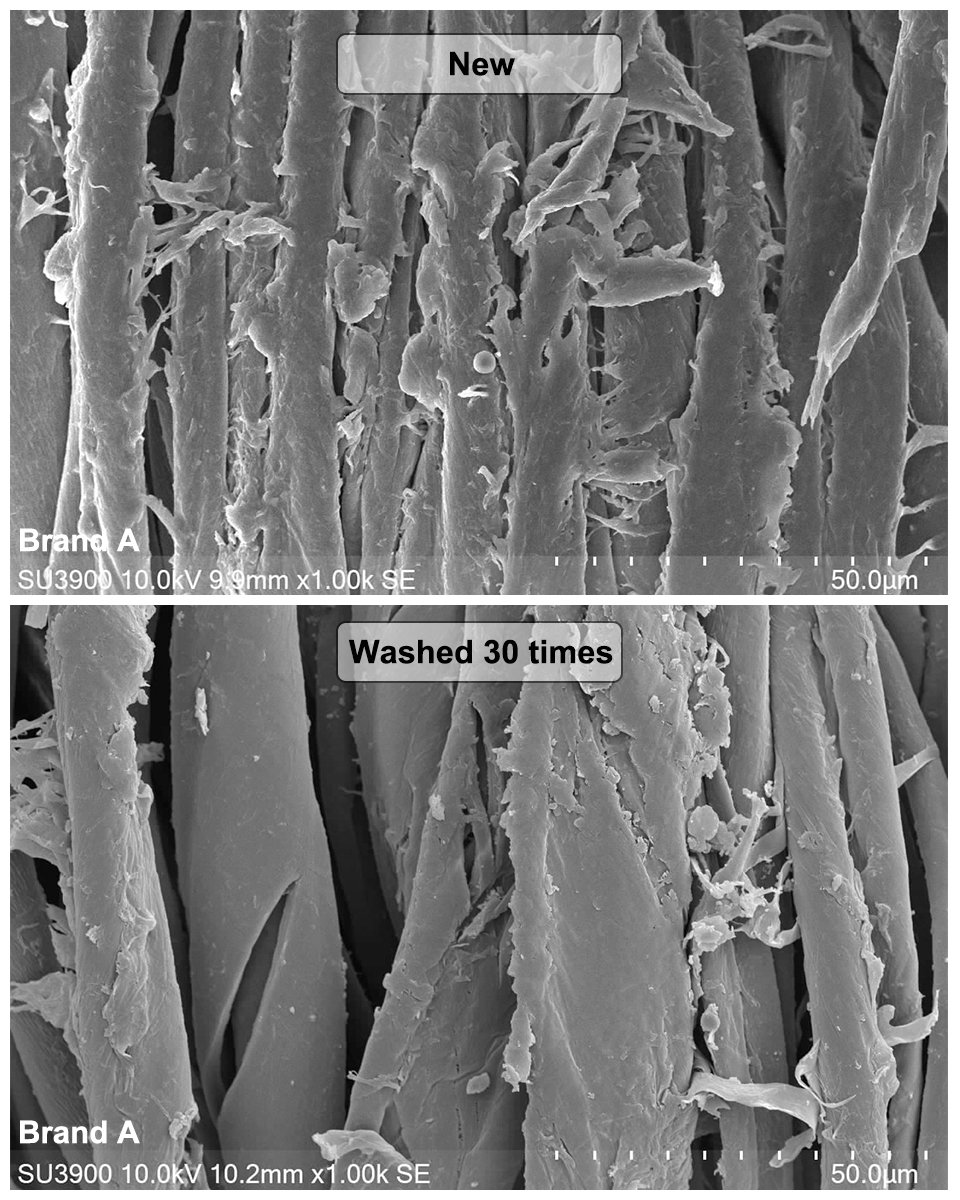
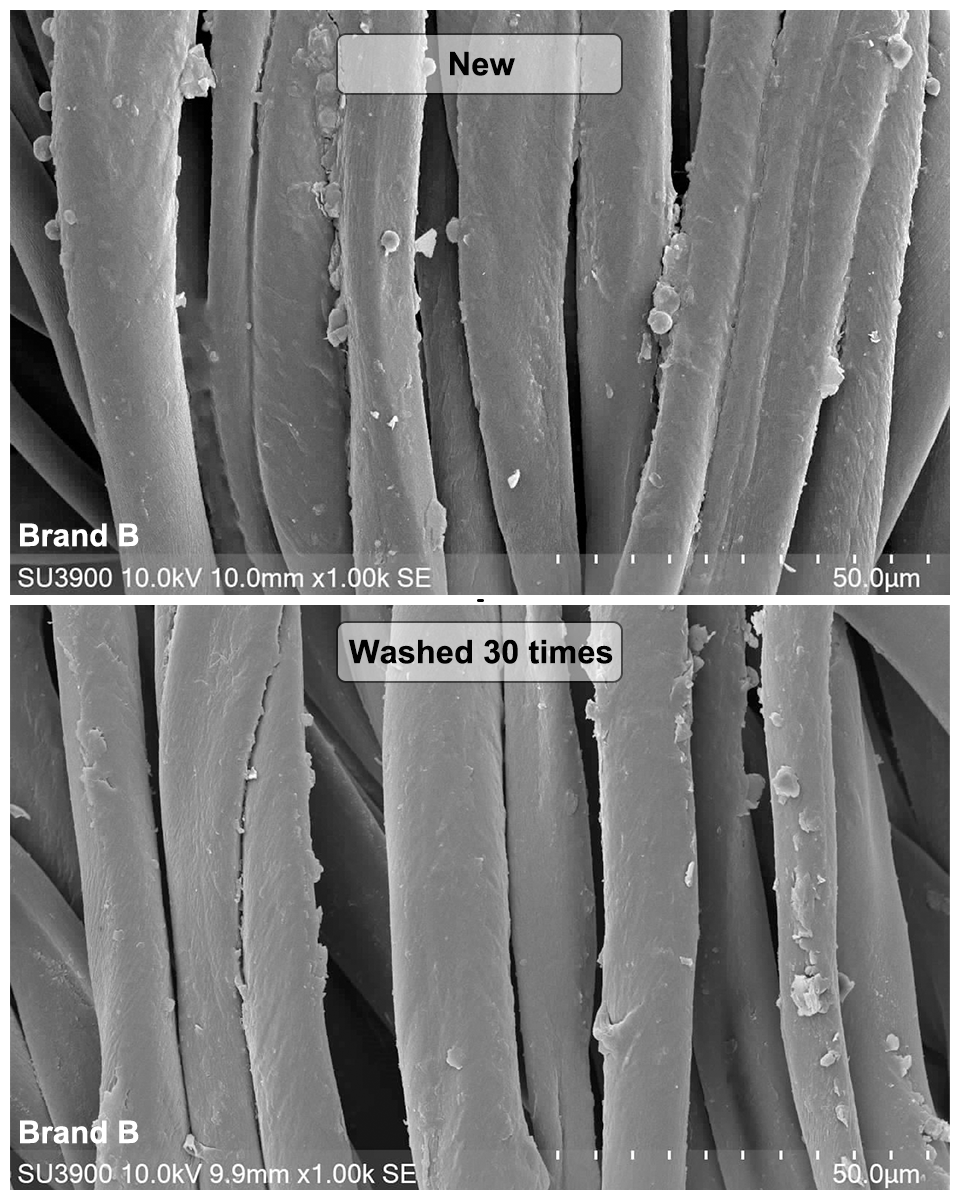
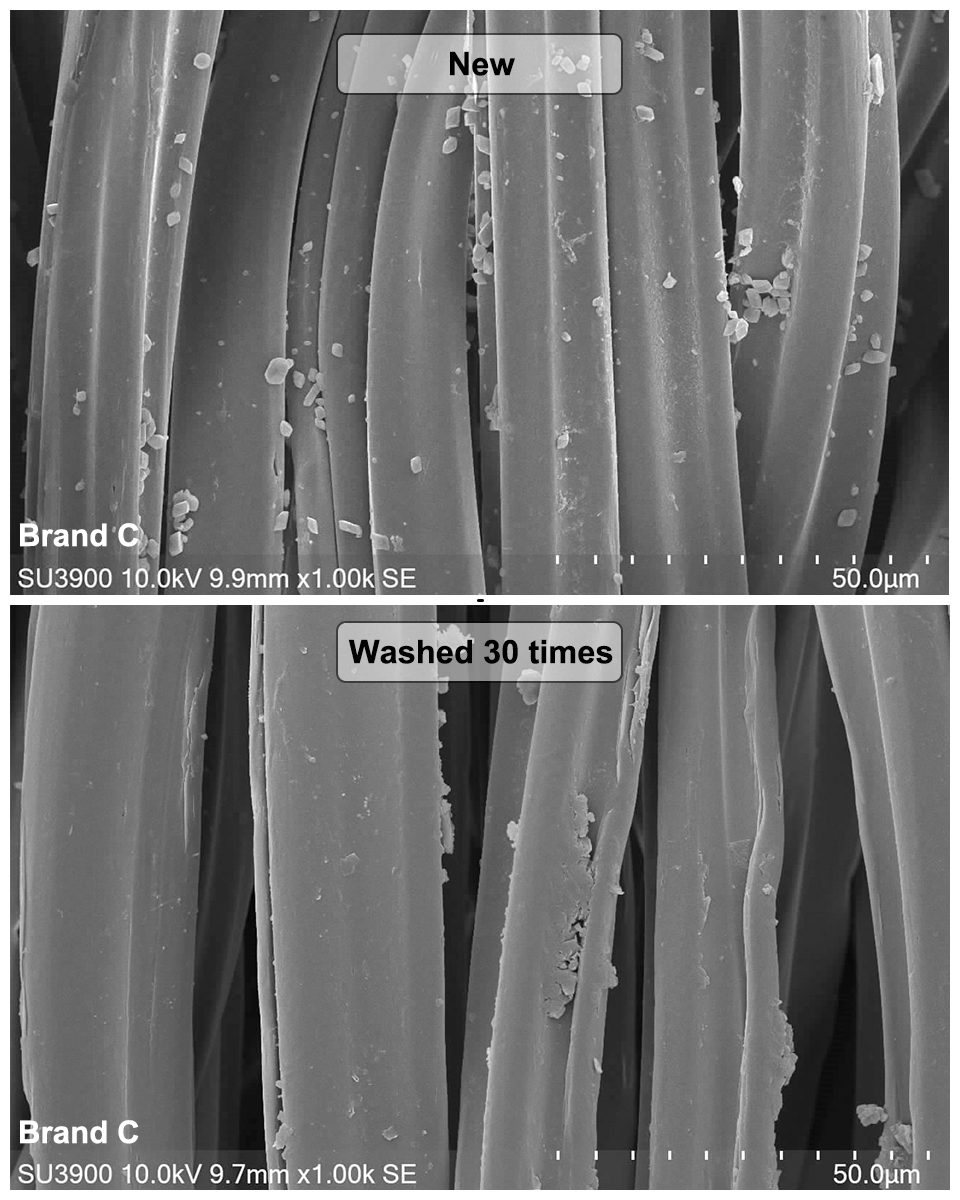
| Brand | Condition | Thread shape | Thread size | Woven density | Coating |
Brand A | before wash | round | thin with moderate size consistency | High density | high density and spread thoroughly |
after 30 washes | some were damaged | expanded | moderate loss of density | some washed away | |
Brand B | before wash | round | thick with high size consistency | high density | moderate density and spread thoroughly |
after 30 washes | maintained shape | maintained size | maintained high density | mostly washed away | |
Brand C | before wash | uniquely flattened | thick with high size consistency | high density | high density and spread thoroughly |
after 30 washes | mostly maintained | expanded | moderate loss of density | mostly washed away |
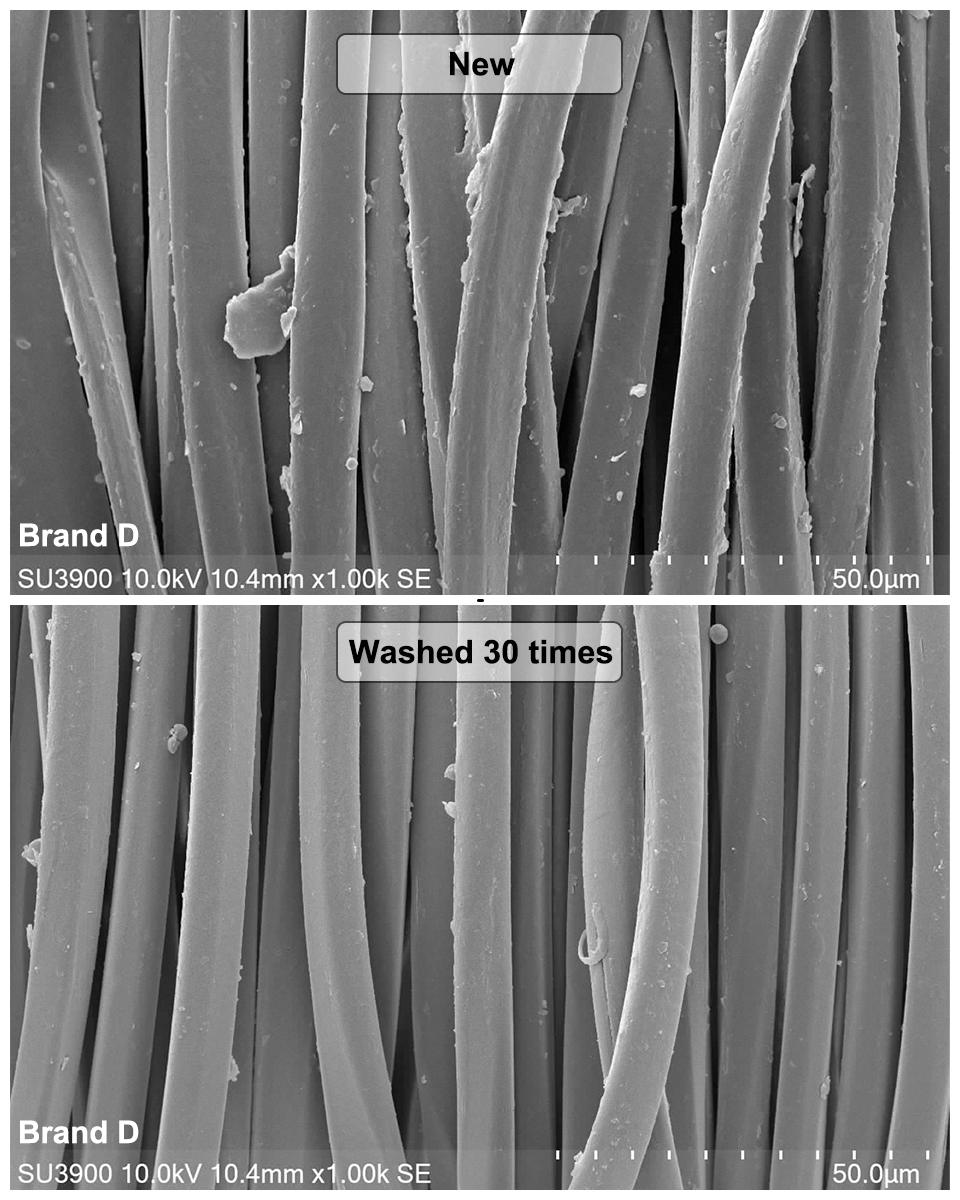
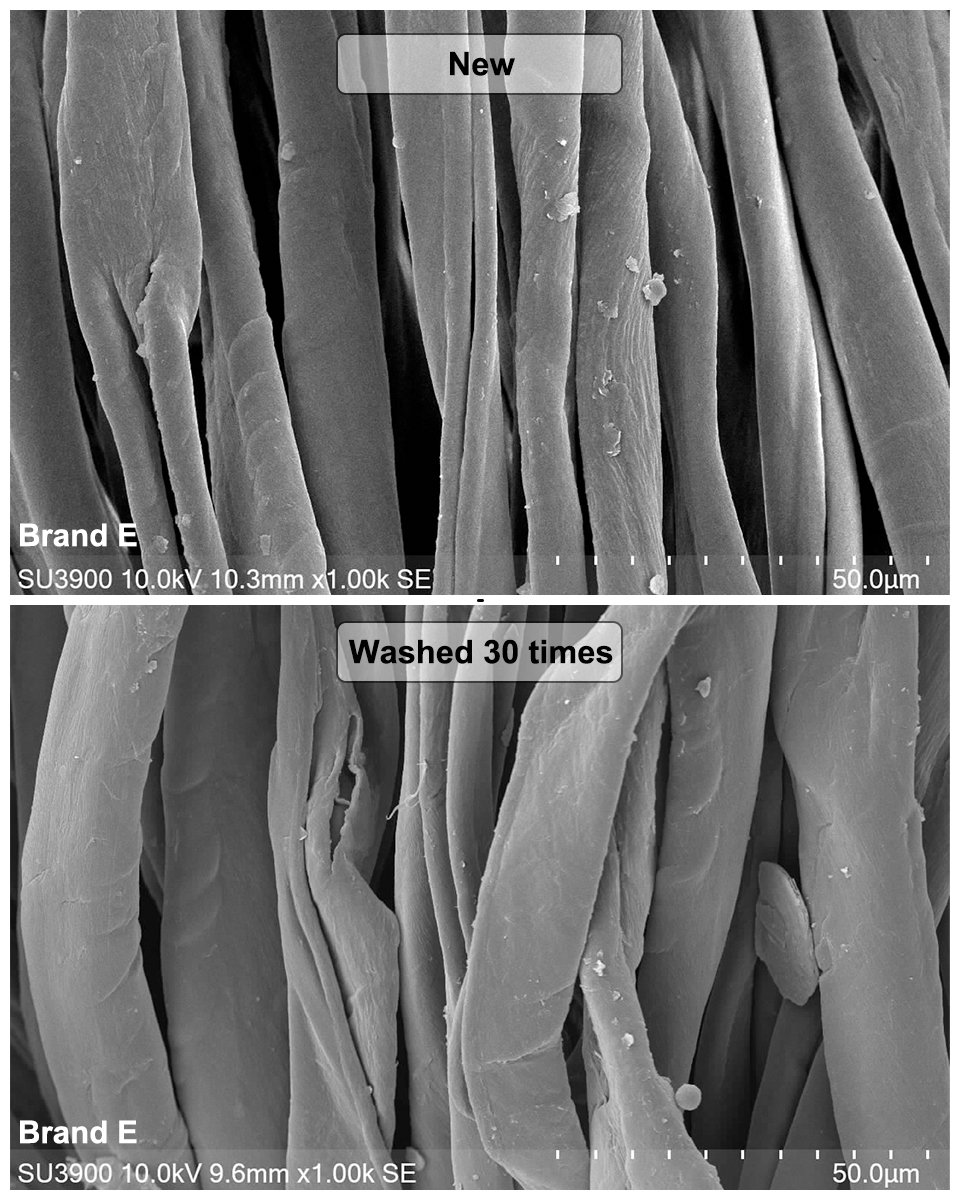
| Brand | Condition | Thread shape | Thread size | Woven density | Coating |
| Brand D | before wash | round | thin with hign size consistency | high density | moderate density and spread thoroughly |
| after 30 washes | maintained shape | maintained size | maintained high density | mostly washed away | |
| Brand E | before wash | round (distort and split) | uneven size | low density | low density and not spread thoroughly |
| after 30 washes | some were damaged | expanded | moderate loss of density | mostly washed away |
Reference
Brooks JT, Beezhold DH, Noti JD, et al. Maximizing Fit for Cloth and Medical Procedure Masks to Improve Performance and Reduce SARS-CoV-2 Transmission and Exposure, 2021. MMWR Morb Mortal Wkly Rep 2021;70:254–257. DOI: http://dx.doi.org/10.15585/mmwr.mm7007e1